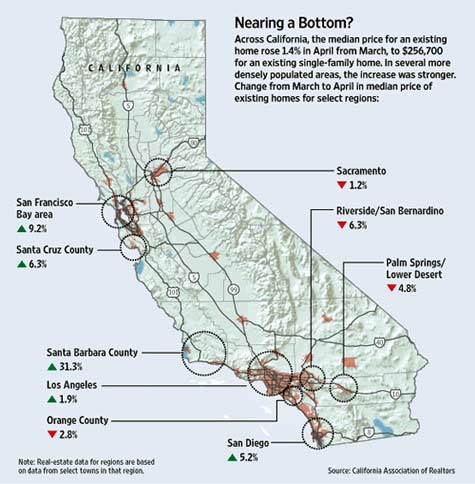
A weak economy and tightened financing conditions contributed to a slowdown in California home sales and median price during May, the CALIFORNIA ASSOCIATION OF REALTORS® (C.A.R.) reported yesterday.
- Home sales in May declined 5.8 percent from April and 14.4 percent from the previous year, while closed escrow sales of existing, single-family detached homes in California totaled a seasonally adjusted annualized rate of 471,840 units. The statewide sales figure represents what would be the total number of homes sold during 2011 if sales maintained the May pace throughout the year. It is adjusted to account for seasonal factors that typically influence home sales.
- “Market demand has been sluggish as would-be home buyers remain concerned about the direction of the economy. They may also be weary of delays in the buying process and difficulty in getting a home loan,” said C.A.R. President Beth L. Peerce. “This, combined with lenders putting distressed properties on the market at a more deliberate pace, is contributing to homes sitting on the market longer.”
- The statewide median price of an existing, single-family detached home sold in California edged down 0.7 percent in May to $291,760 from a revised $293,800 in April. May’s median price was down 10.9 percent from the $327,460 recorded in May 2010.
- C.A.R.’s Unsold Inventory Index, which indicates the number of months needed to deplete the supply of homes on the market at the current sales rate, rose to 5.4 months in May, unchanged from April, but up compared with May 2010’s 4.5-month supply.
- The median number of days it took to sell a single-family home was 51.8 days in May 2011, compared with 37.8 days for the same period a year ago.
For all your real estate needs, call or email:
John J. O’Dell Realtor®
Real Estate Broker
O’Dell Realty
9530) 263-1091
jodell@nevadacounty.com








